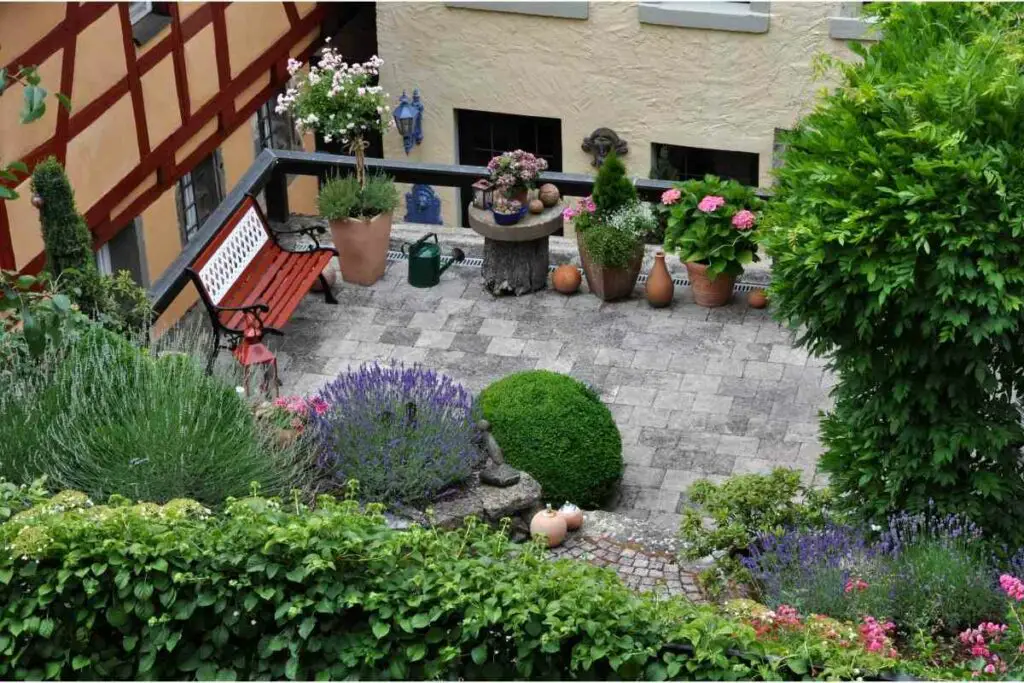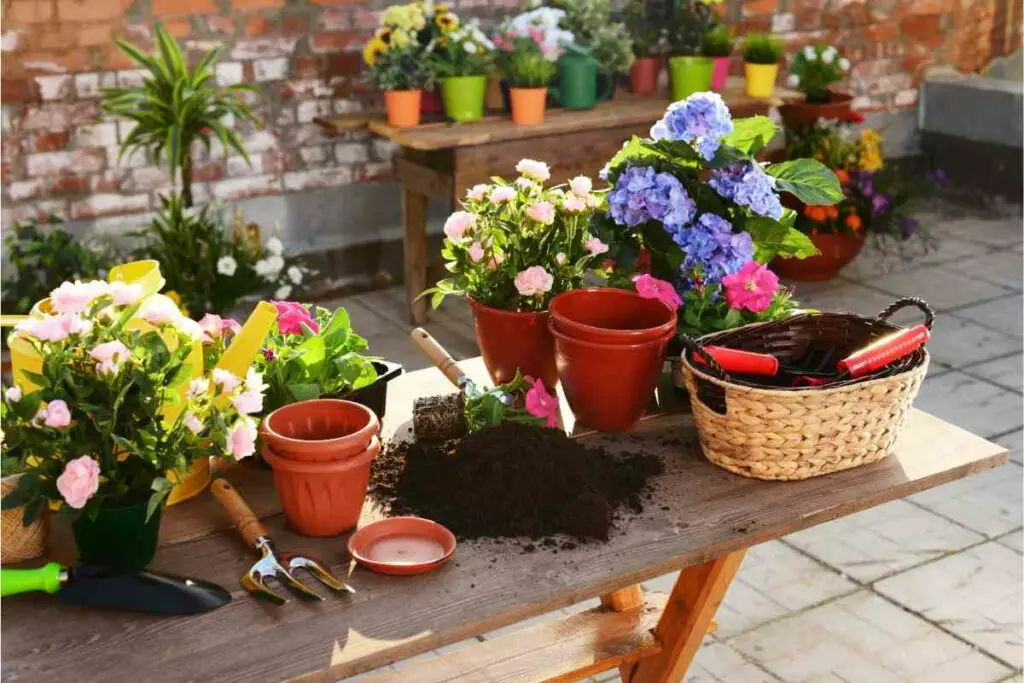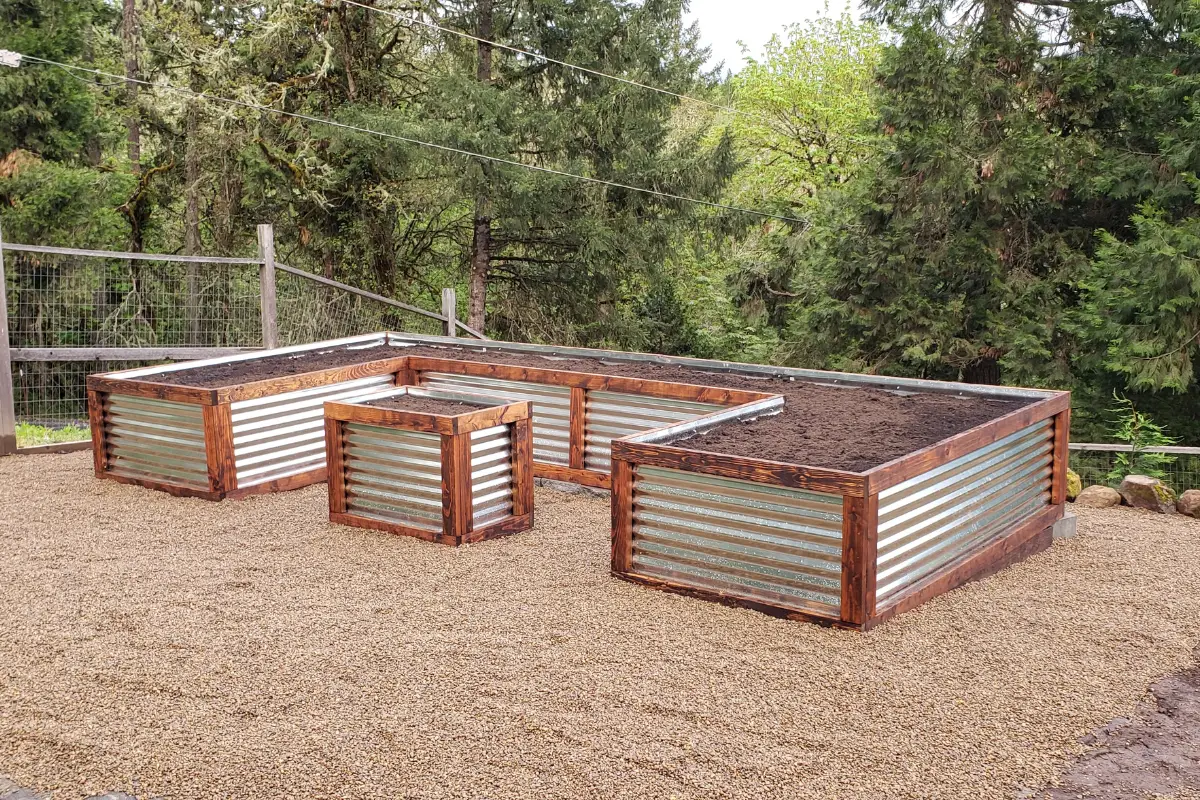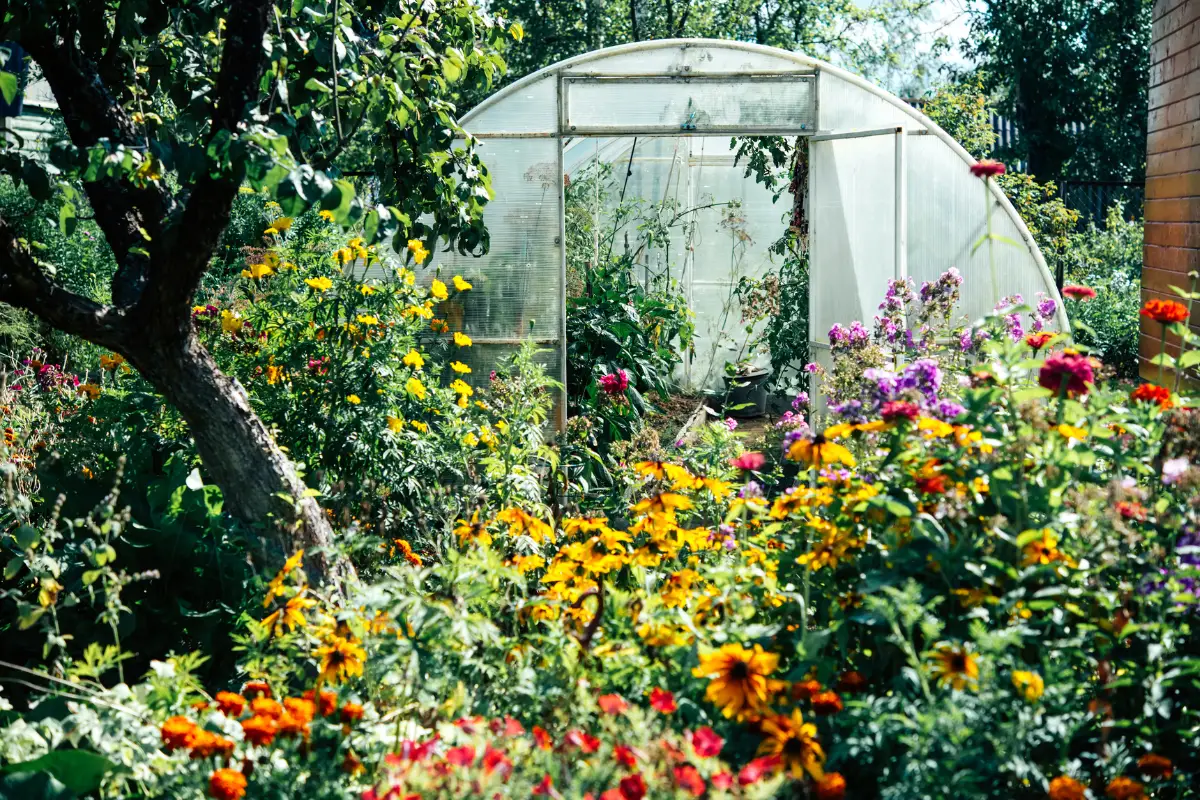Rooftop gardens come with plenty of benefits. Your plants get direct sun, and you can grow your own food. However, knowing exactly where to start a terrace garden can be confusing.
To install a rooftop garden, you’ll need to first add waterproofing to the roof. Then, prepare a lightweight soil mixture and containers that use the proper amount of drainage. Some gardeners even include an irrigation system in their rooftop garden.

Table of Contents
How Do I Start a Rooftop Garden?
Starting a rooftop garden requires a lot of dedication. You’ll first need to prepare by learning about the building code in your area.
You want to ensure the roof is strong enough to hold a garden without causing structural damage.
If you live in an apartment, make sure the owners are okay with gardens. Once you know you can work on the garden, you’ll need to choose your plants!
What Plants Should I Use?
First, take into consideration the weather where you live. You want to ensure your plants can thrive in the conditions.
If it’s very windy on your roof, you’ll want to choose short plants that won’t get hit by the breeze as much.
Some plants thrive in heat, which is better for roofs in full sun. Many beans love the summer heat! If you’re in a cooler area, try growing lettuce or onions.
Overall, the plants you use will have to match the environment. You’ll want to do some research to make sure you’re giving the plants the best possible space to grow in.
If you do, you’re sure to get impressive results with the garden.
What Containers Should I Use?
Next, you’ll need to consider the planters you want to use in your garden.
If you enjoy DIY projects, you can always make your own. Many people use homemade planters or even buckets with drainage holes.
No matter what you decide to put your plants in, you should make sure they offer plenty of space for drainage.
Otherwise, the plants will start to rot at the bottom. Since you’re building the garden on the roof, it’s also essential that you use lightweight containers.
What Soil Should I Use?
Next, you need to prepare the proper soil. Since gardens on the roof won’t have access to natural earth, you need to ensure you have soil with lots of nutrients. The best option is to make your own.
Bring your homemade soil up to the rooftop in large plastic buckets. You can use your homemade soil as usual.
However, it’s good to change it out with fresh soil yearly. You’ll also want to add fresh compost to the soil every other week or so.
If you don’t make your compost, now’s a good time to start! It’s easy and will provide your rooftop plants with the nutrition they need.
Once you have the soil setup, you can easily add your plants! Dig out holes in the soil, then carefully place the plant inside. Make sure to water them well after to situate them better.
How Do I Water Rooftop Plants?
Watering your rooftop plants can be a challenge. It’s unlikely that you can bring a hose up to the roof. The best option for most gardeners is to use a watering can.
However, you can also make your own watering system. Some gardens build irrigation systems or use a rain barrel.
Prices pulled from the Amazon Product Advertising API on:
Product prices and availability are accurate as of the date/time indicated and are subject to change. Any price and availability information displayed on [relevant Amazon Site(s), as applicable] at the time of purchase will apply to the purchase of this product.
Rain barrels are very convenient- you won’t have to lug a full watering can upstairs every day.
Overall, you have plenty of options when it comes to watering your plants. You must consider how you plan to water the garden before you install it.
If you happen to have a water spigot on the roof, it will be easy to care for.
Should I Set Up Wind Blocks?
You also may want to set up wind blocks on the roof. Since these areas are high off the ground, they can see a lot of wind, which can knock over your plants. So how can we protect our plants?
Windbreaks can block the wind, preventing your plants from getting blown over.
You can use a perimeter wall as a windbreak. Many people prefer them because the wall also adds more privacy to the rooftop garden.
However, a trellis can also block smaller amounts of wind.
Overall, you don’t want your plants constantly exposed to the wind. On a breezy day, they could easily blow over the edge of your roof!

Should I Consider Talking to a Contractor?
Before you get to crafting your rooftop garden, it’s a good idea to speak with a building contractor. They’ll let you know if it’s safe or not.
Unfortunately, some buildings won’t be able to support the weight of a garden.
A contractor can inspect the building and let you know if the building can hold a garden, as well as how much weight you can add.
Some rooftops won’t hold extensive gardens, so you must use lightweight soil and containers.
No matter what, it’s always good to make the garden weigh as little as possible. You can use plastic, foam, wood, and fiberglass containers instead of concrete and ceramic ones.
Overall, you want to keep your garden light, even if they tell you it can hold a lot.
Can I Build My Own Planters?
You can build your lightweight planters to sit on the roof. Wood is an excellent material for rooftop gardens because it’s not super heavy. You can use 2 x 4 wood planks to build a simple elevated planter.
Use the planks to construct a simple box with gaps in the bottom for drainage.
Then, place it on four small wood pillars to elevate it a few inches off of the ground. It shouldn’t take you very long, but you’ll probably want to build two at least.
However, if you don’t want to make your own planters, using a five-gallon bucket is a popular option. Simply drill a few large holes in the bottom before adding the soil and your plant.
- How to Build a Planter Box for Bamboo: A Step-by-Step Guide

- Can Robotic Lawnmowers Handle Steep Slopes?

- Do You Need a Specific Lawn for a Robotic Lawnmower? Expert Advice

- Are Robotic Lawnmowers Safe for Pets and Children? Safety Features of Robotic Lawnmowers

- Why Use Robotic Lawnmowers? Advantages of Using a Robotic Lawnmower

- Is the GARDENA SILENO City 300 Cordless or Corded? A Clear Answer















